Trinity Trees
Part of what makes our Trinity campus so beautiful is our trees. In addition to the large trees that provide the shade and scenery that many of us enjoy, Casey Trees generously donated and planted 100 new trees on our campus in the fall of 2021. This website highlights the different species that were planted, and why trees are so important to our campus.
Trinity Washington University is located in Washington, DC. Like most urban areas, Washington, DC is a heat island. Watch this video to learn more about heat islands and how trees can help moderate our climate.
Dr. Patrice A. Nielson, Assistant Professor of Environmental Studies, provides narration about the Trinity Trees project.
Our New Trees On Campus
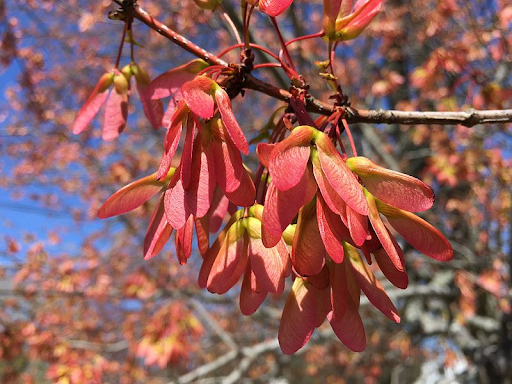
Acer rubrum ‘October Glory’, or Red Maple, is native to low, wet areas of the Eastern United States. The bright green leaves in spring and summer turn radiant red in late fall and last several weeks. The red fruit attracts many birds and other wildlife. Photo credit Famartin
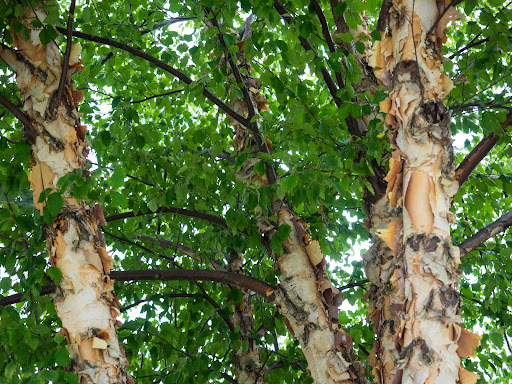
Betula nigra ‘Dura-Heat’, commonly known as River Birch, is native to the eastern United States. It grows in northeast states, south to Florida and west to Minnesota. In its native habitat, river birch grows well in low and medium elevations and is most common along streams. In landscapes, they are known for their white, peeling bark and yellow fall foliage. Photo credit: F.D. Richards
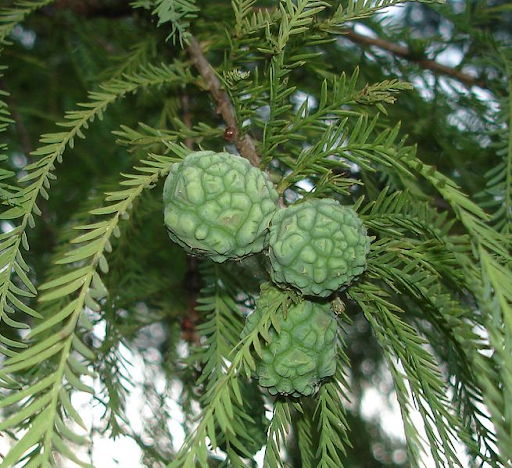
Taxodium distichum, also known as the Bald Cypress, is native to wetlands of the southeastern United States. Although it has needles like many evergreens, it is deciduous and loses its needles each winter. Wildlife eat the seeds inside its cones, and the rot-resistant wood has been used to make fence posts, doors, flooring, caskets, cabinetry, boats, and more. Photo credit: Docku
This video describes some of the considerations that go into selecting trees and making sure they work well on different areas of campus. When planting trees, it’s important to choose species that are a good fit for your space so that they have the best chance of thriving.

Celtis laevigata, known as Sugarberry, is a native species that ranges throughout the southeastern U.S. It is a tough shade tree that tolerates a wide range of soils, making it a good lawn or street tree. It produces sweet, juicy berries eaten by birds and other wildlife. Photo credit: Richard Murphy
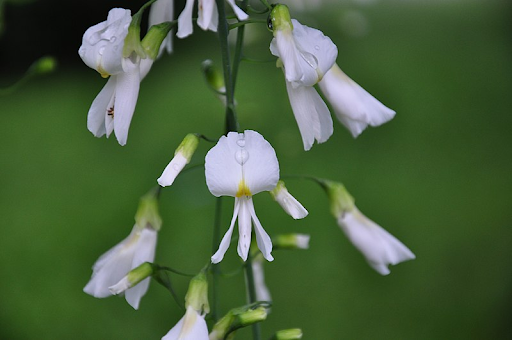
Cladrastis lutea, known as the Yellowwood, makes a great large shade tree. It is native from North Carolina to Kentucky and Tennessee, and has white flowers followed by seed pods that ripen in the fall. Photo credit: Elektryczne jabłko
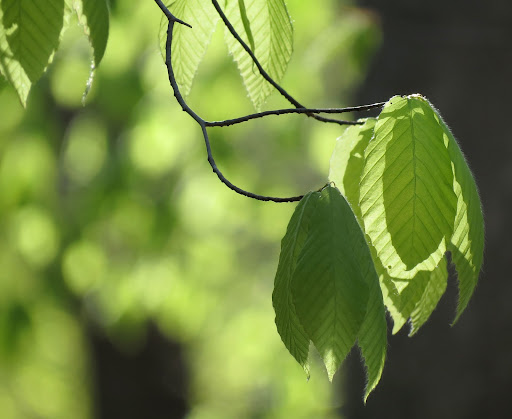
Fagus grandifolia, the American beech, is an iconic shade tree with smooth, blue-gray bark, native to eastern North America. It produces small beech nuts in a showy pod that are valued by wildlife and visually unique. Its bright green leaves turn a beautiful yellow in fall. Photo credit: Katja Schulz
Most of our new trees are species that are native to the Washington, DC region. Watch this video to learn about another one of our other native tree species on campus and why it’s important to use native species in landscaping.

Ginkgo biloba ‘Autumn Gold’: Gingko is a beautiful shade tree with fan-shaped leaves that turn bright yellow in the fall. This species is not native to the United States, but originally comes from Southeast Asia. It is not invasive in this region. It is considered a living fossil because it is the only surviving species of the Ginkgo family, which has existed for about 150 million years.
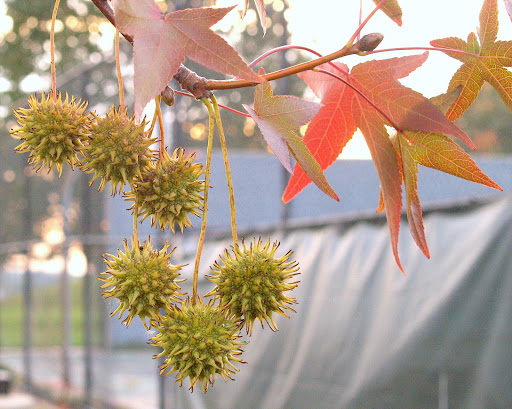
Liquidambar styraciflua ‘Happidaze’, or American Sweetgum, is native to the eastern U.S. It is a durable shade tree with star-shaped leaves and seeds that are valuable for wildlife. Sweetgum wood can be used to make furniture, and gum from these trees was formerly used in products such as chewing gum and medicines. Photo credit: Maggie
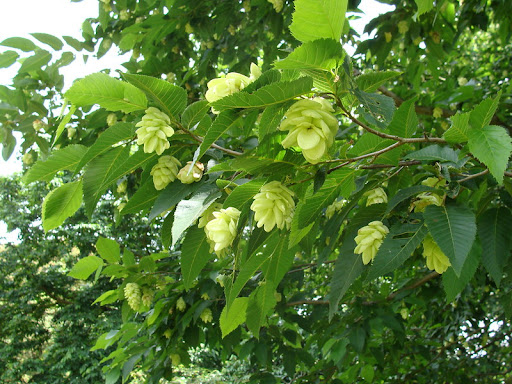
Ostrya virginiana, the American Hophornbeam or Ironwood, is a graceful tree with yellow fall foliage and a compact shape. It gets its name from the resemblance of its seeds to hops used in beer production (although the species are not closely related). Usually it is valued by wildlife for shelter and food. Photo credit: kew

Platanus x acerifolia ‘Exclamation’, the London Planetree, is a hybrid species originally from Europe, but that does not become invasive in other regions. It is a very tough shade tree that tolerates urban environments well. It is known for its attractive bark with patches of red, green, white, and creamy yellow. Round seed pods that can be seen in the fall and winter hold seeds that can be a food source for bids. Photo credit: Acabashi

Prunus serrulata ‘Kwanzan’ is a fruitless flowering cherry tree originally from China, Japan and Korea. They are not known to be invasive. This tree is best known for its fluffy pink and white clusters of blossoms in spring. Photo credit: Myrabella / Wikimedia Commons / CC BY-SA 3.0
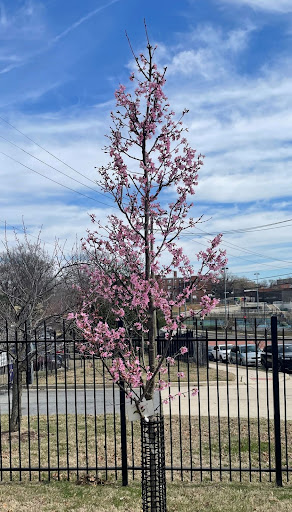
Prunus x incamp ‘Okame’ is a flowering cherry variety that blooms very early in spring. They have excellent heat and cold tolerance. Originally bred in mountainous areas of Southeast Asia, they are not known to be invasive. Photo credit: Mekdim Tadele
Watch this video to learn more about why we love our cherry trees so much, what that has to do with environmental justice, and other benefits trees can provide.

Quercus alba, or White Oak, is native to eastern and central North America. It is a very large and long-lived shade tree whose wood is still prized for barrels used for aging wine and other alcoholic drinks. The acorns, buds, and leaves all provide valuable food sources for wildlife. Photo credit: Dan Mullen

Quercus bicolor, or Swamp White Oak, is native to the north central and northeastern U.S. mixed forests. A large shade tree, it is adapted to wet soils. It is often cut and sold as white oak for general construction and woodworking purposes. Photo credit: Adrienne
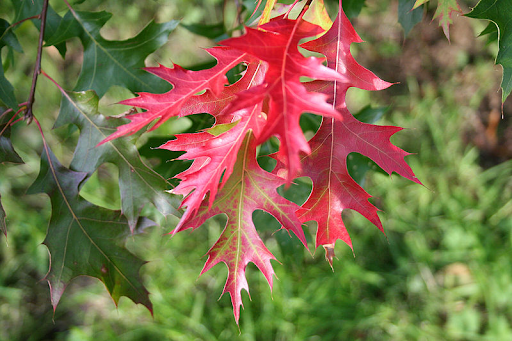
Quercus coccinea, or Scarlet Oak, is native to Eastern Canada and the United States and is the District of Columbia’s state tree. The wood is used for furniture, flooring, and other specialty items. Acorns are a favorite food source for birds, squirrels, and deer and it produces brilliant red fall foliage. Photo credit: Jean-Pol GRANDMONT

Quercus imbricaria, the Shingle Oak, is native to estern North America. It is a medium shade tree with oval leaves that is attractive to birds and mammals. It is adapted to a wide range of soils and makes a good park or street tree. Its wood was once commonly used to make shingles for houses. Photo credit: Krzysztof Ziarnek
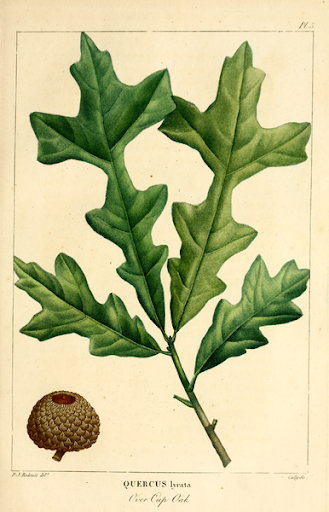
Quercus lyrata, or overcup oak, is a small to medium shade tree ideal for smaller lawns that provides protective shading for houses and people. It is native to low, wet areas in the eastern and south-central United States. The name comes from the unique acorn that is mostly covered by the acorn cap. Image credit: Pierre-Joseph Redouté, public domain

Quercus phellos, or the Willow Oak, is native to poorly drained areas of the Atlantic and Gulf coastal plains and the Mississippi River valley region of North America. It is named for its long, thin leaves that look more like those of a willow tree than most oaks. It tolerates urban environments well and produces small acorns valued by wildlife. Photo credit: Franklin Bonner
